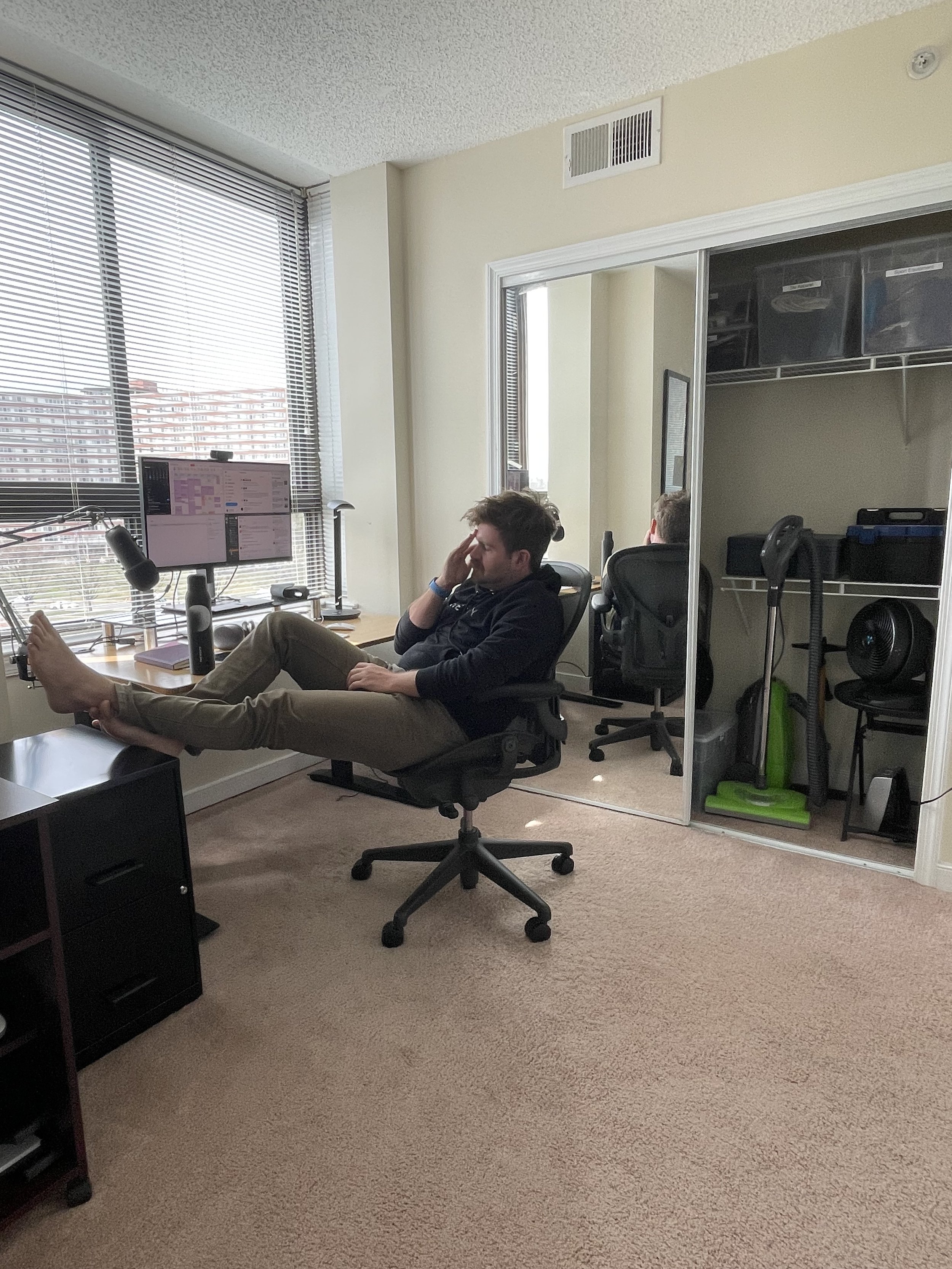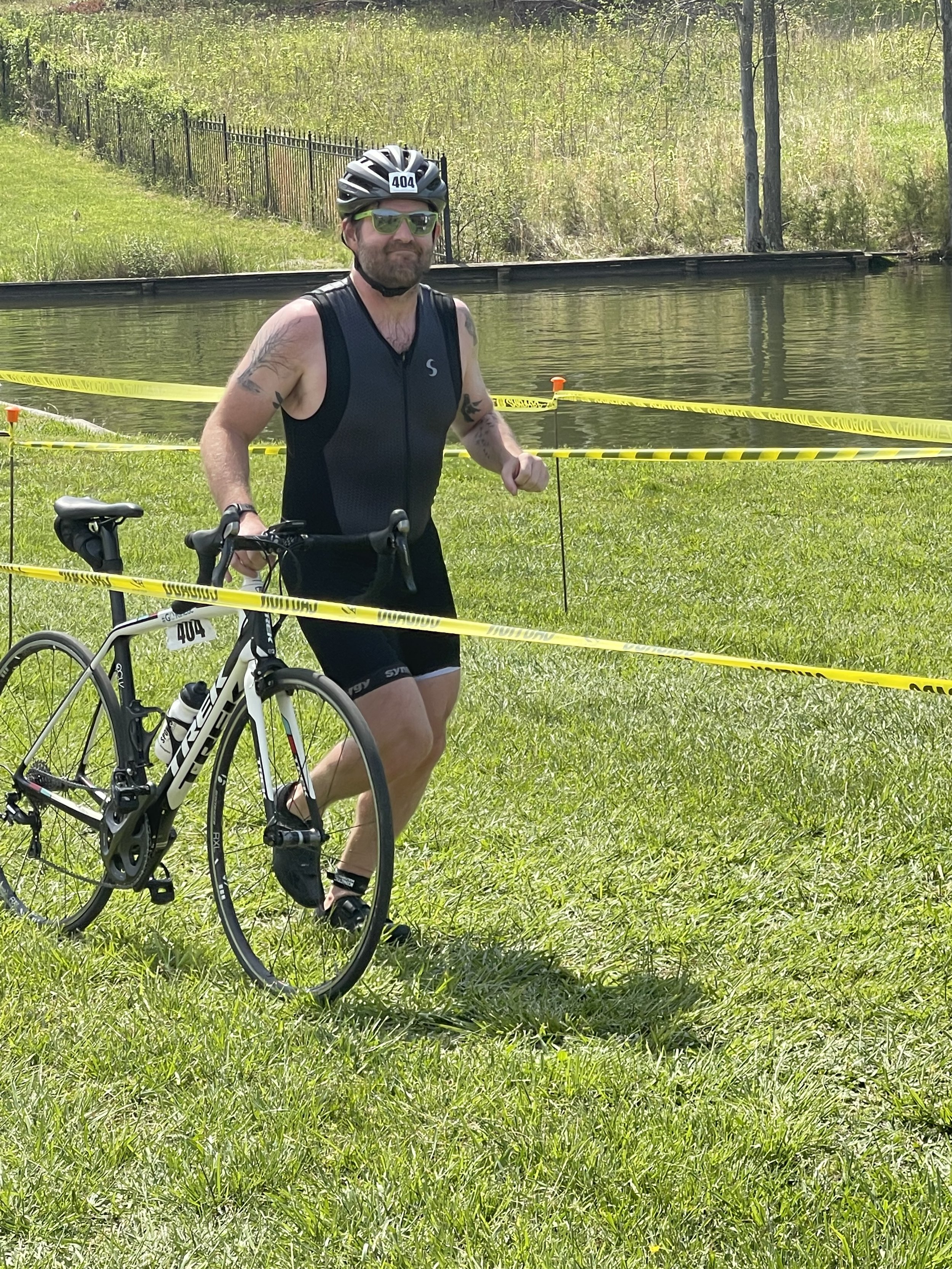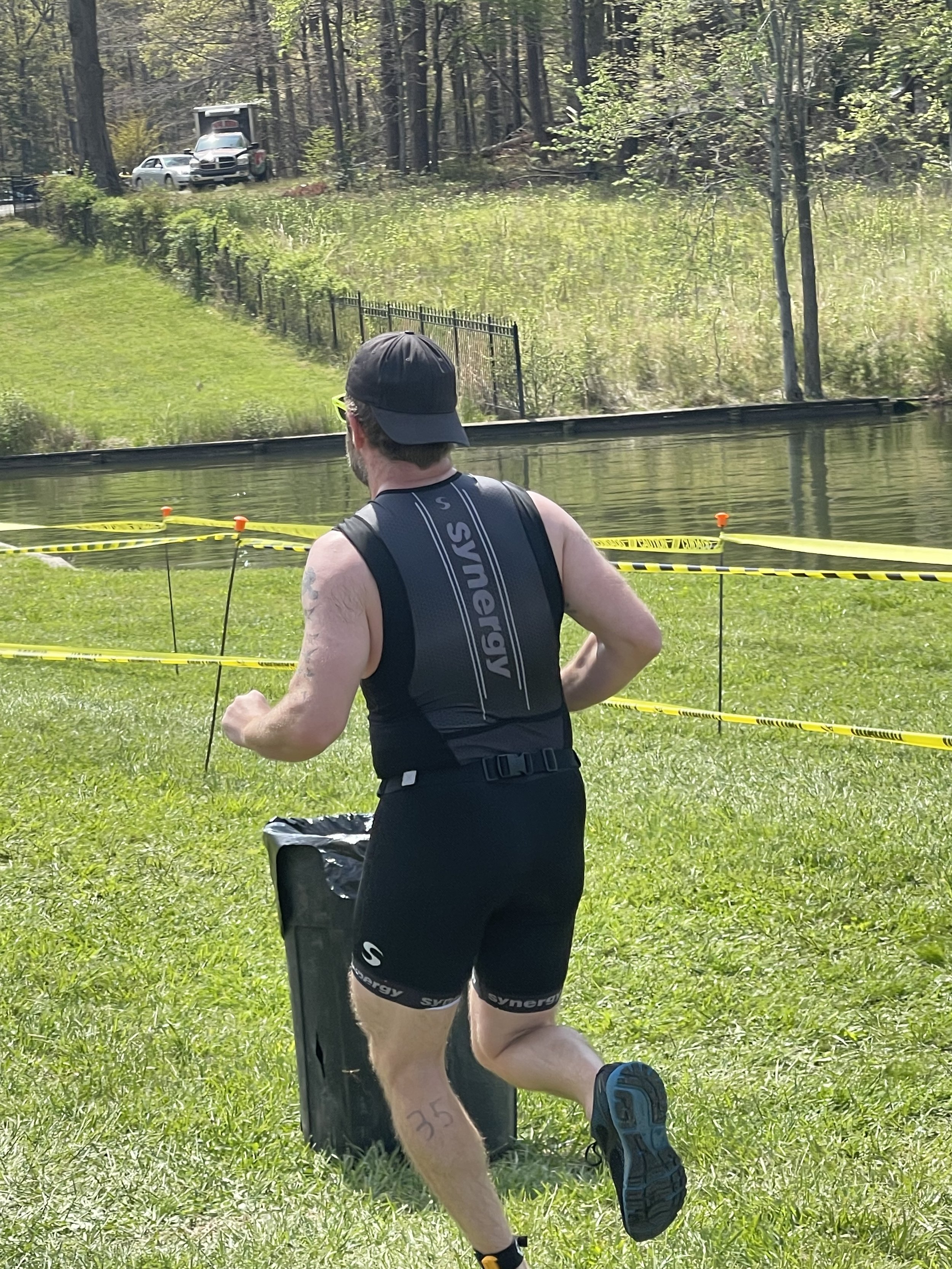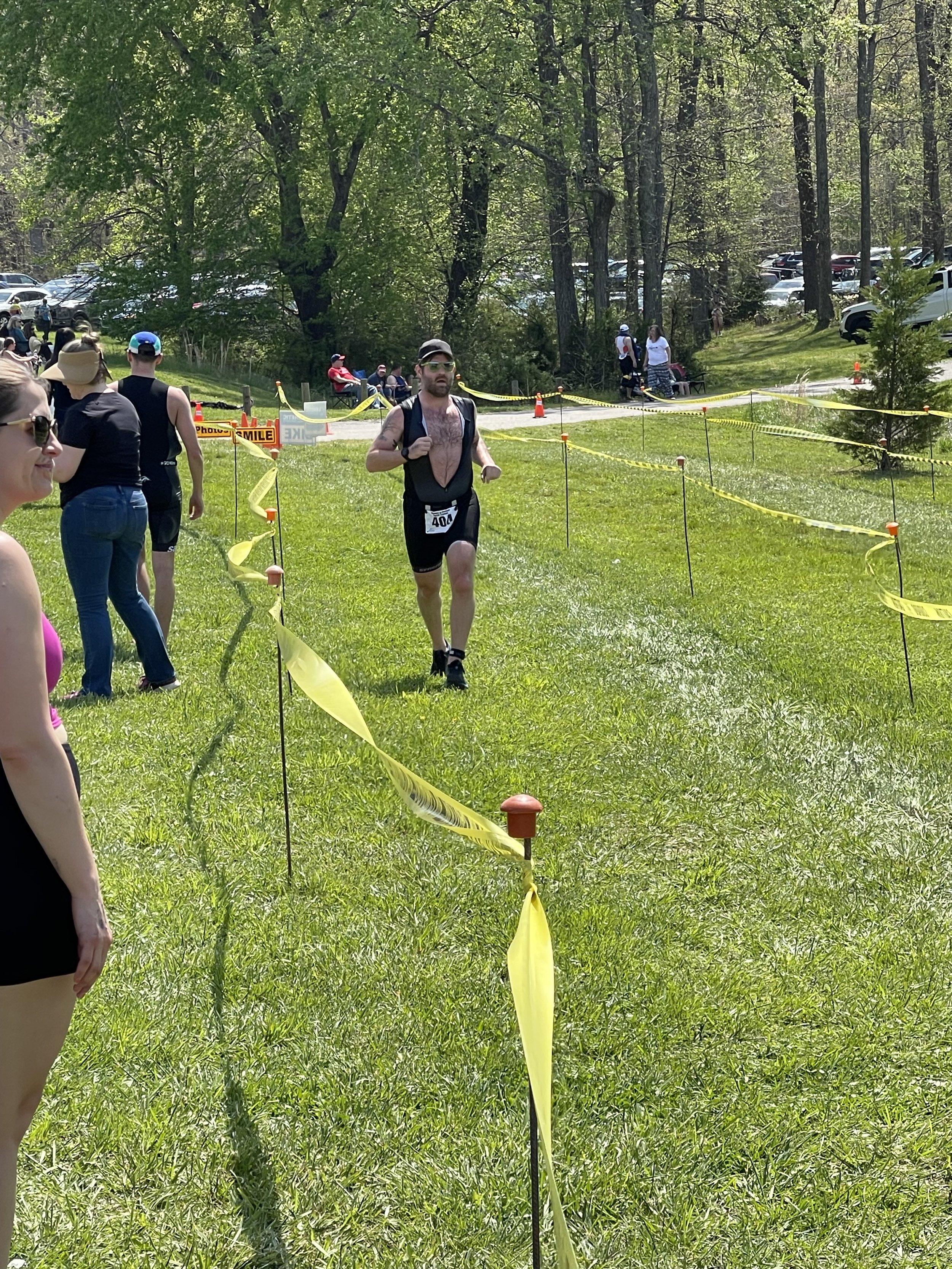This article turned into more of an overall audit of the physical things in my life rather than a specific look at what changed in 2024. It’ll be good to use as a touchstone in future years, I think. All links are non-referral and simply there for your convenience.
Tech and Work
I was fortunate enough to have a few significant upgrades in my most frequently used hardware this year. I was eligible to upgrade my work laptop and went from a M1 MacBook Air to a M3 MacBook Air. I stayed at the 13-inch size because it’s mostly closed and connected to an external monitor when I’m at home and when I’m traveling I want it to be as small as possible.
I used a big chunk of our credit card points to get a new M4 iPad Pro 12-inch with cellular, a Magic Keyboard, and Magic Pencil. This is the first “normal” sized (i.e. non-Mini) iPad I’ve owned in a few years and I’m using it as my personal device since I’m trying to create more of a firewall between my work device (the MacBook Air) and my personal devices (the iPad Pro). I ended up trading in my refurbished iPad Mini earlier this year because I found it frustrating to use because it had such little storage and its performance seemed strangely bad compared to what I was expecting. I’m loving having a powerful device with a cellular modem. There’s something really liberating about not needing to hunt for wi-fi when out and about.
Other than the computer, there are no significant changes to what sits on or near my desk. I still look at a 27” 4K Z27 HP monitor all day every day and the same Logitech BRIO webcam sits on top of it. I still use a Magic Keyboard and Magic Mouse as my primary peripherals when I’m sitting at my desk. I still have a Shure MV7+ USB mic on a boom and an Elgato key lightto make me look and sound good on podcasts and video calls. No changes to my nearly decade-old Fully Jarvis sit/stand desk or Herman Miller Aeron chair despite moving this year. If I wasn’t on a podcast I’d be able to massively simplify this desk setup. I think this is as simple as I can make it while still being able to record the quality of audio and video we need for At Work with The Ready.
At the end of 2023 I bought a set of AudioEngine A2 desk speakers because I got tired of trying to use my original HomePods as computer speakers. The HomePods are still in my office but are mostly just there to fail at my verbal Siri requests instead of failing at playing audio from my computer.
I didn’t upgrade my phone this year so I’m still rocking a case-less and mildly cracked iPhone 15 Pro Max. No changes to my daily headphones, AirPods Pro. The AirPods Max are still hanging around but mostly only get used as airplane headphones when they aren’t hanging from a hook under my desk. My daily (and training) watch continues to be the Apple Watch Ultra 2 with cellular.
This year I re-discovered the joy of index cards. I keep a stack of them on my desk and just whip through them any time I feel the need to jot something down or keep my hands busy during a meeting. I have the same brass pen on my desk that I’ve had for years. It’s hefty, takes Pilot G2 refills, and feels great in my hand. I do almost everything digitally nowadays, so I think I’ve been on the same medium, hardcover Moleskine notebook since the end of 2022. It stays on my monitor riser during the day and I make sure to always have it with me when I travel.
Entertainment
Entertainment hardware basically stayed the same except for one extremely significant exception: a new TV. I took advantage of a good Black Friday sale to pull the trigger on a 65” Sony BRAVIA XR A95L OLED TV to replace the 55” TCL we had since early 2018. It’s still early days but it seems like a remarkable piece of hardware.
Everything connected to it, a Sonos Playbase, two Sonos Play 1s, PlayStation 5, Nintendo Switch, and Apple TV 4K remain unchanged.
There was actually another TV purchase made this year, but it was much less exciting. In an effort to spruce up my indoor riding situation (as mentioned in my 2024 in Review: Training article), I got a cheap 32” Samsung and put it on a rolling cart with another Apple TV 4K as my dedicated Zwift machine. It is helping to make indoor riding slightly more bearable.
I’m still rocking two original HomePods in my office and two HomePod minis (one in the bedroom and one in the kitchen). They are primarily used for getting frustrated with Siri and sometimes playing very nice audio.
I still do most of my non-iPad or non-iPhone digital reading on a Kindle Paperwhite.
Training
2024 marked my third full year of training for triathlons and the vast majority of my equipment has remained unchanged from the original equipping I did in the summer of 2021. I’m still rocking the same mystery year, Craigslist-attained, Trek Madone road bike with aftermarket aerobars, a Garmin Edge 530 head unit, and Garmin Forerunner 745 watch. The watch, somewhat interestingly though, has mostly lived in a drawer as I’ve learned I can use my Apple Watch Ultra 2 as my everyday watch and training watch. I even wore it during my half Ironman race this year and it had plenty of battery to get through the whole 6+ hour race. The other piece of kit that has mostly lived in a drawer this year is my Apple PowerBeats Pro headphones. These are my go-to headphones to wear when riding outside because it’s impossible for them to fall off but I’ve done much less of that this year. Riding indoors, running indoors or outdoors, and strength training all happen with my AirPods Pro.
I still do the vast majority of my running in On Cloudmonsters. I wear Pudolla running shorts, Amazon Basics tech t-shirts, and the running hats given as part of participating Ironman Michigan 70.3 the past two years. I’ve got Baleaf swim jammers, a Speedo pull buoy, some Omid goggles, and Speedo swim caps. I actually have two pairs of flippers because I thought my original pair didn’t make the move from Arlington, but apparently they did. I have the same basic Shimano cycling shoes I’ve had since the beginning. My Saris bike rack for my car continues to be a stalwart (it was stolen off my car in 2023 and I re-purchased the exact same model).
As mentioned in the previous section, I upgraded my indoor riding room by getting a TV and an Apple TV 4K to give me a better setup for using Zwift. Another part of that upgrade was replacing my Kickr Snap with a Kickr Core. I also bought an Amazon Basics weight bench to keep in that room and it primarily serves as a table for my nutrition during long rides. A generic music stand does a good job of holding my iPad and phone within arm’s reach while I’m riding.
A few other fun upgrades this year was getting a Giro Aerohead MIPS racing helmet and a new Cannondale Topstone gravel bike. I live within easy riding distance of an approximately 9 mile gravel trail that tracks along the Hudson River so I wanted to get something that would let me ride it, especially since I’m pretty sketched out about riding on the roads around me. I also picked up some On carbon-plated shoes to wear during my race, but I got cold feet about actually wearing them for my half Ironman this year since I hadn’t yet done a long run in them. They will be waiting for me next year, though. I don’t think I’d call a new heart rate monitor a fun purchase, but I did have to replace my original Garmin this year and I decided to go with a Wahoo Tickr. My racing kit — one of the development team fundraiser options from That Triathlon Life — was new this year and made me feel faster than I am. My second pair Goodr sunglasses finally de-laminated so badly I couldn’t see out of them any more, so I got a pair of Tifosi’s for my outdoor cycling needs.
Kitchen
No major changes in kitchen kit this year. I remain the primary chef for our family and more or less have everything I need to handle cooking for us.
Starting in roughly chronological order of when I interact with these tools, my coffee setup remains anchored by my Fellow grinder and electric kettle. I get my beans delivered on a schedule from Trade Coffee (use this referral link if you check it out and I’ll get some free coffee) and generally alternate between AeroPress and pour overs, depending on my mood. I have a multi-cup Chemex that I don’t think I used once in the past year, but keep handy for any situation where I need to make coffee for more than just me. There’s also an espresso machine Emily gave me last Christmas, but it’s more for afternoon snacks. In the morning, I’m a simple pour over or AeroPress guy. The Eufy handheld vacuum stays right next to the grinder and kettle and is extremely necessary for cleaning up my coffee grinding mess.
Our Aarke water carbonator gets a lot of work and we keep it supplied with CO2 via a subscription from SodaSense. Our KitchenAid stand mixer is always ready for me to whip up some bread dough or cookies. Our Breville 650XL toaster oven is a total champ (thanks to John Siracusa for the recommendation). Our Vitamix remained underused this year, as Emily has seemingly moved on from her smoothie phase and I keep thinking about making soup in it and then not doing so.
A Belkin charging stand lets us use our phones in Standby Mode while we’re doing things in the kitchen. Our Frigidaire dehumidifier makes sure the apartment isn’t getting weirdly humid. There’s a pizza stone living in the oven — ensuring we’re always ready to make some bread or a pizza. Deli containers are our go-to leftover containers of choice and my Zojirushi travel mug is always standing by waiting to keep my coffee hot for an unnaturally long time.
My knives aren’t particularly noteworthy, other than the fact that I try to keep them all extremely sharp with a nice whetstone session every couple months or so.
Clothing
Some expensive shoe purchases over the past few years are coming to fruition this year in the fact that other than some new running shoes, I didn’t have to buy any other shoes this year. I’m still rocking Wolverine boots from 2018, Rothy’s sneakers from 2022, Velasca sneakers from 2020, Velasca dress shoes from 2021, Teva flip-flops from 2018, Glerups from 2021, and some brown BEDSTU shoes from at least 2018. I was tired of buying shoes that fell apart after a year and were impossible to repair.
I don’t generally think about my clothes very often because I tend to wear the same thing over and over, but this year did result in me changing two staples pretty significantly. After many years of wearing Everlane t-shirts, I got frustrated with their worsening quality and decided to find a new default shirt. I landed on Uniqlo for awhile, but they were somehow too nice? At least, they were too thick. I then stumbled across the Comfort Colors brand in some random article and they’ve become my new default shirt. Cheap and soft and pretty nice fitting.
I went on a similar journey for new socks after wanting to move on from the Everlane/Aasics combination I had been rocking for the past few years. I ended up going with Darn Tough in two different varieties: ankle socks and mid-calf socks. I’m learning to quiet the Millennial voice that yells at me every time I wear socks that extend beyond my ankles.
I had to get some new sunglasses this year after breaking my previous pair and decided to go with some custom RayBan Wayfarers (got them with orange arms and blue frames, which looks good with my orange strapped Apple Watch Ultra 2).
Odds and Ends
A few other significant additions this year include a new Roomba i3+ EVO robot vacuum and a (new to us, but used) 2014 Subaru Forester. When we moved to New York we needed a second car since Emily commutes to an office every day in our 2020 Toyota Camry. I bought a ridiculously expensive, but really good, phone mount for the Forester and now it’s basically perfect for what I need it to do.
A few old stalwarts worth mentioning include maybe the oldest piece of tech I own, a Coway air purifier from 2016 that lives in our bedroom. My Wahl beard trimmer is also still going strong from 2017.
Looking Ahead
Despite this being the longest article in my 2024 Year in Review series, I didn’t actually buy many new physical items this year. I’d definitely like to keep that trend going in 2025. Moving has a way of really clarifying how much stuff you have in a really visceral and annoying way, so even though we don’t have any imminent plans to move again, there’s definitely a non-zero chance we could move again sooner rather than later and I’d love to not live in fear of that possibility more than I have to.

























